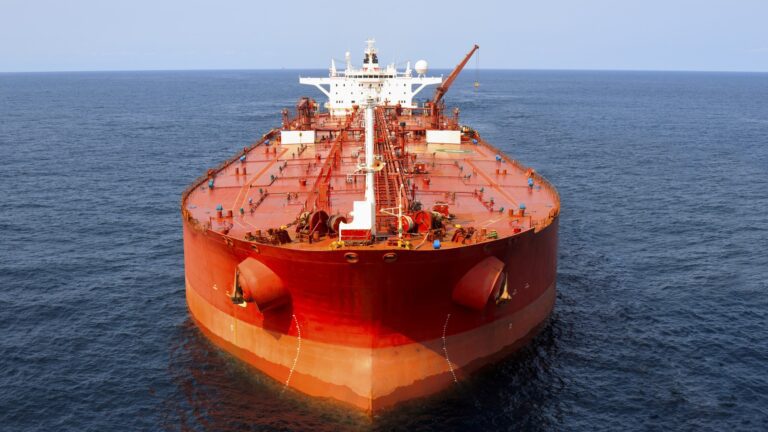
Since writing that report, conflict levels have further intensified with ongoing drone attacks against passing maritime traffic and “preventative” military strikes from the US Navy and Britain’s RAF in return.
The aim of the US / UK strikes has been to nullify the Houthi threat and protect international trade, but with major shipping lines such as AP Moeller saying that the counterstrikes are actually making the security situation worse, should we now expect a prolonged crisis and resultant increases in the price of fuel?
Southern Arabian Peninsula
The strife-riven Southern Arabian Peninsula has a long history connecting it to the oil industry. Historically part of the British Empire (Federation of Southern Arabia), the port of Aden was a key coaling (refuelling) station for ships voyaging between Europe and India, via the Suez Canal (built in 1869).
Fuel oil took over from coal as the “bunker” of choice for ships from 1900 onwards, but Aden’s role as a key fuelling station continued. By 1950, it had become one of the busiest ship-bunkering ports in the world, fuelling over 7,000 ships per annum (20 ships per day) and to meet this demand, BP opened the 170,000 barrel per day (bpd) Aden refinery in 1954.
For the next 20 years, the Aden refinery was one of BP’s most profitable, taking cheap crude oil from inland Yemen and converting it into heavy fuel oil for shipping. However, in 1977 the refinery was nationalised by the newly formed People’s Republic of Yemen and soon became embroiled in a spectacularly complicated civil war that rages to this day and has claimed hundreds of thousands of lives.
The current “stage” of the conflict pits the “officially” recognised government of Yemen (Presidential Leadership Council) against both the secessionist and socialist southern Yemen (including the Aden Governorate), and the Houthi led Supreme Political Council that controls the North Western part of the country. In addition, there are a long string of other regional and religious combatant groups.
“This slowly rusting hulk of iron presents an environmental time-bomb.”
The impact of interminable hostilities on the country’s oil industry has been predictably dire. The Aden refinery ceased production in 2015 and crude oil production has declined from 500,000 bpd to less than 10,000 bpd today. It has also resulted in some bizarre and worrying outcomes, not least the stranded 1m barrel super-tanker “FSO Safer” (ahem…), that has lain at anchor for the last 8 years. With nowhere to discharge its cargo and the ownership of the oil disputed by rival factions, this slowly rusting hulk of iron presents an environmental time-bomb and no-doubt some bargaining collateral for anyone who can lay claim (legally or otherwise) to its contents.
With no refinery, major security concerns and ships that can sail much further without refuelling, bunker activity around Aden is now virtually non-existent. Nonetheless, the flow of maritime traffic sailing past the port has not diminished. In 2023, 24,000 vessels took the Red Sea passage, of which 25% were transporting oil products. Overall, 12% of global trade and 15% of all European imports sail this route.
Since the Houthi rebels began their campaign of attacking maritime vessels deemed as “friendly” to Israel, international ship owners have faced a daunting logistical choice. Carry on as normal and face the prospect of attack, or divert cargoes 5,000 nautical miles around the other side of Africa. This extra distance adds somewhere between 10 to 15 days of sailing time and costs around $1m in extra fuel for a Suezmax vessel (i.e., the maximum size of ship able to travel through the Suez Canal). Furthermore, that same type of ship will typically emit a further 3,000 tonnes of CO2 by taking the route around the Cape of Good Hope.
Crude Tanker rates
Unsurprisingly, Crude Tanker rates have increased significantly. Those tankers still using the Suez route between the Middle East and Europe have seen rates increase by 65% to $4.30 per barrel (~2.15ppl = pence per litre), largely reflecting increased insurance premiums. For those vessels avoiding the Red Sea, rates are a further $2.40 per barrel higher (~1.15ppl) and, for refined products, rates are higher still. “Clean” tanker rates (i.e., carrying refined products) have almost doubled to $13 per barrel (~6.50ppl), whilst biodiesel cargoes imported from Asia via Suez have increased from around $18 per barrel to $25 (up by circa 3.25ppl).
These freight increases are particularly acute for European markets as, since Indian diesel replaced Russian diesel (post-Ukraine), Europe has been dependent on product travelling via the Suez Canal. The same is true when it comes to biodiesel, where half of the EU’s Used Cooking Oil (UCO) is imported from Asia (via the Suez route). Crude prices on the other hand are yet to move too far upwards on the back of the current situation.
Global demand for oil still looks pretty shaky and markets generally are actually still over-supplied. Furthermore, the important geographic fact remains that however circuitous, there are still available shipping routes that bypass the Red Sea. This means that, irrespective of increased freight costs, product shortages (the real driver of price spikes) are unlikely.
Hopefully this offers some comfort to hard-pressed consumers, although they shouldn’t relax too much. If, for example, the current crisis was to spill over into the Northern Arabian Peninsular, then that would threaten the flow of 20% of global oil production (Iran, Iraq, Kuwait, Bahrain, Qatar and the UAE), because there are no alternative shipping routes to the Straits of Hormuz. Now that would have a seismic effect on prices.

www.stabilityfromvolatility.co.uk
